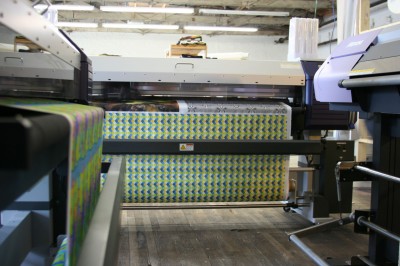By Syd Northup
When planning to purchase a wide-format dye sublimation system, it is important to ‘begin at the end’ by first considering what the final product will be. A sign shop’s planned output will dictate its choices between various printers, bulk ink systems, heat presses, raster image processors (RIPs) and colour matching tools. A trade show display assembler, for example, may need a different wide-format printer than a point-of-purchase (POP) graphics provider or a flag shop.
By breaking down the components of the overall dye sublimation system, it becomes possible to capture a ‘snapshot’ of bottom-line costs and profits in terms of return on investment (ROI). And while a market may not already be in place before the purchase, opening up a sign shop’s client base with sublimation technology can drive some very rapid growth.
Printers
Wide-format dye sublimation printers can range from around $5,000 to more than $50,000, depending on the size of the desired output.
There is plenty of choice these days, as a variety of 1.1 to 3.2-m (44 to 124-in.) printers from major manufacturers—including Roland, Mutoh, Mimaki and Epson—are being firmware-converted from pigment- or solvent-based systems to operate with sublimation inkjet dyes. These models usually fall within the $10,000 to $15,000 price range. Warranties are typically available, with the ink manufacturer or distributor supporting the chosen printer.

There are many components to assemble when a sign shop enters the dye sublimation market. Photo courtesy Syd Northup
Some manufacturers include a take-up reel with their printers, while others sell it as an option. With today’s printing speeds, a take-up reel is recommended, since it facilitates a roll-to-roll production workflow and allows for unattended printing.
Actual production speed will depend not only on the printer’s own speed, but also on the RIP software. For most fabric applications, profiles can be created at 360 x 720 dots per inch (dpi) and then the images can be run at speeds upward of 23 m2 (250 sf) per hour, depending on the printer model. For harder substrates, it is common to slow down the printer with a resolution of 720 x 720 dpi to increase the image quality and saturation.
In addition to changing the resolution, the pass count can be altered to increase or decrease printhead speeds. After on-site profiles are created, running a test file will help measure the printer’s true speed of production.
It is a good idea to be conservative when running a printer’s cost analysis for paper and ink. As a company’s dye sublimation business grows, buying both paper and ink in bulk will help reduce overall total cost per square foot.






